tlynar
Current research students.
Lisa Liu-Thorrold
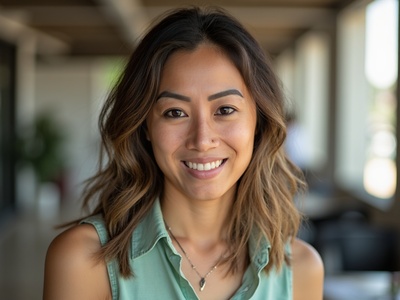
Lisa Liu-Thorrold received her Bachelor of Engineering (Honours) degree in Software Engineering from the University of Queensland, Australia in 2016. She has almost completed her Ph.D. degree at the University of New South Wales (UNSW), Canberra, Australia. Her specific research interests include generalization, interpretability, and bridging the gap between theoretical advancements in neural architectures and the operational requirements of real-world network security systems.
Jessemyn Modini

Jess is an experienced technology leader, academic and security researcher, global keynote speaker, inventor and advisory board member. Jess is currently the Head of Product at a start up that is in stealth and will be launched in 2025. Prior, she has held senior positions at Amazon Web Services and the Australian Cyber Security Centre, and the Australian Department of Defence.
Jess holds 5 Master’s qualifications in Cybersecurity Operations, Systems Engineering, Space Operations, Project Management and International Relations (Security). Jess is currently undertaking a Doctorate in Cyber Security, focussing on applications of epidemiology to cyber security (Cyber Epidemiology) for threat modelling and cyber herd immunity at scale. Jess’s research explores computational biological approaches to threat modelling and cyber threat intelligence sharing. Jess is collaborating on international research projects with the Institute of Information Science Academia Sinica, applying Artificial Intelligence for the detection of Advanced Persistent Threats (APTs).
Jess has presented global thought leadership on Cyber Threat Intelligence at industry events and conferences, including AISA CyberCon and global conferences including AWS re:Inforce and re:Invent which attract an audience of over 60,000 people. Jess is also CTO of the Australasian Society for Computers and Law (AUSCL) - a leading think-tank advancing education and advocacy at the intersection of technology, law and society.
Research Interests
Jess’s research centres on the novel application of epidemiological models to cybersecurity, developing cyber epidemiology frameworks that enable threat modelling and cyber herd immunity at scale. Her work bridges computational biology and cybersecurity through innovative approaches to threat intelligence sharing and analysis. She is particularly interested in advancing artificial intelligence applications for Advanced Persistent Threat detection and developing scalable models for information sharing and analysis centres.
Research collaboration opportunities:
Jess actively seeks collaborative opportunities with researchers working at the intersection of public health modelling and cybersecurity, computational social science applications to cyber resilience, and interdisciplinary approaches to critical infrastructure protection. She is especially keen to collaborate on projects that apply complex systems theory to cybersecurity challenges, explore the socio-technical aspects of cyber herd immunity, and develop predictive models for cyber threat propagation across interconnected systems.
Jasmin Craufurd-Hill
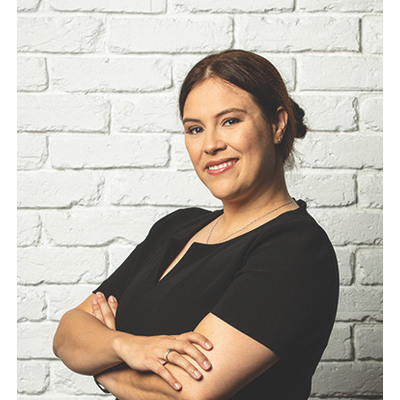
Jasmin is a postgraduate lecturer and Certified Nuclear Security Professional, with Specialisations in STEM and cybersecurity. She has two decades of professional and training experience in secure instrumentation and computer modelling, including as an instructor at the Navy Engineering Training Unit, a consultant on LAND3025 and leading the team responsible for commissioning the control computer, safety systems and human-machine interfaces for the OPAL nuclear research reactor.
Jasmin is the inaugural Future Technology Fellow at the Centre for Defence Research, a Fellow of the Institute of Managers and Leaders and a Member of the Most Venerable Order of the Hospital of Saint John of Jerusalem.
Jasmin holds a Bachelor of Science (Physics), a Graduate Certificate in Intelligence Analysis, MBA, a Master of International Relations and a Master of Applied Cybernetics with Commendation from the Australian National University. She is currently a PhD candidate at UNSW Canberra, where she is pursuing research on the application of epidemiology to cybersecurity.
Harriet Farlow
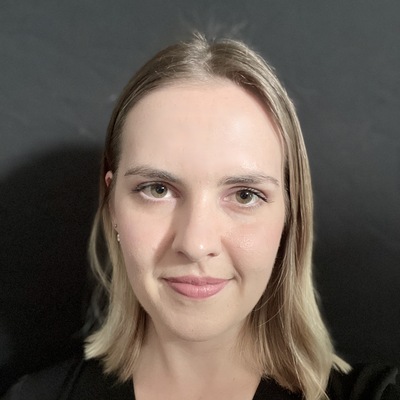
Harriet Farlow is the CEO and Founder of Mileva Security Labs. With a decade of experience at the intersection of AI and cyber security, Harriet is a recognised leader in her field. Harriet’s journey began at Deloitte Australia, where she specialised in Defence portfolio projects as a Senior Consultant. Her career also spans roles as a Data Scientist at the University of Sydney and as Senior Delivery Lead at a tech education start-up in New York City. She returned to Canberra to work for the Australian Government, where she served at the intersection of data science, cyber security, and national security, eventually becoming an acting Tech Director. She holds a degree in Physics and Bio-anthropology, along with a Master’s in Cyber Security. In 2021 she commenced a PhD in Machine Learning Security. This is where she encountered AI Security and adversarial machine learning for the first time. In 2023, Harriet founded Mileva Security Labs, driven by her mission to raise awareness about AI system vulnerabilities and provide solutions to secure them. Her work ensures that organisations are equipped to defend against threats and protect their AI systems from disruption and compromise. She is also a passionate communicator, as the host of The AI Security Podcast, through her YouTube channel HarrietHacks, and as a speaker at BSides and DEF CON.
Publications:
Farlow, Harriet and Edwards, Belinda. “Shining a Light on Encryption Laws.” Computer Law & Security Review, vol. 47, 2022, 101693. ScienceDirect, https://doi.org/10.1016/j.clsr.2022.101693.
Farlow, H., Garrett, M., Mount, G., and Lynar, T. “The Race to Robustness: Exploiting Fragile Models for Urban Camouflage and the Imperative for Machine Learning Security.” Proceedings of the IEEE Region 10 Symposium, IEEE, 2023. https://doi.org/10.1109/10223620
Farlow, H., Garrett, M., Mount, G., and Lynar, T. “Memes in the Machine: Ideological Propagation in Large Language Models.” Proceedings of the 15th IEEE International Conference on Cognitive Infocommunications (CogInfoCom), 2024. http://dx.doi.org/10.1109/CogInfoCom63007.2024.10894714
Farlow, H., Sadhani, T., Garrett, M., Mount, G., and Lynar, T. “Deceive, Disrupt, Disclose: The 3D Model for AI Security.” Proceedings of the 18th International Conference on Information Technology and Applications (ICITA), 2024. https://link.springer.com/chapter/10.1007/978-981-96-1758-6_36
Farlow, H., Garrett, M., Mount, G., and Lynar, T. “Beyond Words: Memetic Theory as a Lens to Expose Ideological Bias in Language Models.” Proceedings of the International Conference on Soft Computing & Machine Intelligence (ISCMI), 2024. DOI: 10.1109/ISCMI63661.2024.10851522
Farlow, H., Garrett, M., Mount, G., and Lynar, T. “Are organisations ready for AI security compliance: a cross-sector survey.” Submitted to Proceedings of The 12th International Conference on ICT for Smart Society (ICISS) 2025.
Musa Phiri
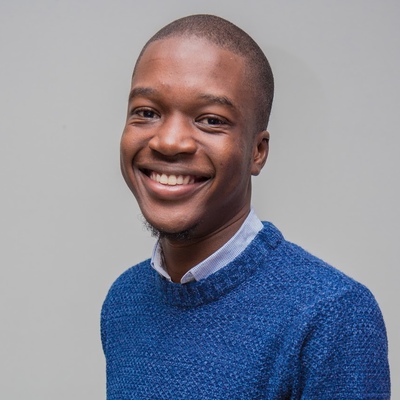
Musa Phiri is a PhD candidate in Computer Science at UNSW Canberra, specializing in Deep Transfer Learning. My research focuses on developing a landscape-aware framework for automatic hyperparameter selection, leveraging landscape analysis and optimization techniques to enhance the efficiency and adaptability of transfer learning models.
Musa holds a Master of Science in Data Science and Big Data from Mulungushi University, where his dissertation explored deep hybrid learning models for photovoltaic solar tracking systems, and a Master of Science in Project Management from the University of Zambia, focusing on forecasting methodologies for construction projects. Hw also completed my Bachelor of Science in Statistics at Mulungushi University.
Research interests
Musa’s research experience spans predictive modeling, machine learning, and deep learning applications across NLP, renewable energy, and health domains. He has expertise in both supervised and unsupervised learning, as well as optimization techniques for AI models. His work has resulted in publications in high-impact journals including IEEE Access and Solar Energy, with particular recognition for my systematic literature review on deep learning techniques for solar tracking systems. Beyond research, Musa is passionate about applying AI-driven solutions to real-world challenges and contributing to advancements in deep learning methodologies.
Musa’s research focuses on adaptive training strategies for deep transfer learning, with an emphasis on using measurable signals to guide learning rate and optimization decisions. Specifically, I investigate how dataset similarity metrics and loss landscape characteristics, such as curvature, sharpness, and gradient dispersion, can be used to dynamically inform learning rate schedules during fine-tuning. My goal is to develop an integrated framework that detects and responds to distribution shifts between source and target domains, which are critical challenges in real-world deployment scenarios such as medical imaging, autonomous systems, and evolving visual recognition tasks. This involves analyzing how these shifts affect the geometry of the loss landscape, and whether that geometry can serve as a predictive signal for optimization sensitivity and generalization performance. By bridging the gap between theoretical understanding of optimization landscapes and practical training strategies, my work addresses a fundamental limitation in current transfer learning: the reliance on static, one-size-fits-all hyperparameter settings that fail to adapt to the underlying data characteristics. Ultimately, my research aims to enable smarter, more generalizable transfer learning systems that adapt in real-time to the data and learning environment, with the potential to significantly improve model robustness and reliability across diverse application domains.
Publications
Mulenga, M., Phiri, M., Simukonda, L., & Alaba F. A. (2023). A Multistage Hybrid Deep Learning Model for Enhanced Solar Tracking. IEEE Access, 11, 129449–129466.
Phiri, M., Mulenga, M., Zimba, A., & Eke, C. I. (2023). Deep learning techniques for solar tracking systems: A systematic literature review, research challenges, and open research directions. Solar Energy, 262, 111803.
Mukupa, G.M., Phiri, M., & Kunda, D. (2018). The Impact of Load Shedding on The Cost of Living: A Zambian Perspective. World Journal of Research and Review 6.
Phiri, M., Mulenga, M., Kunda, D., & Alaba, F. A. (2023). A Deep Hybrid Learning Model for Photovoltaic Solar Tracking Systems. Proceedings of International Conference for ICT (ICICT) - Zambia, 5(1), 53–58.
Mulenga, M., Phiri, M., & Simukonda, L. (2023). Feature Enhancement and Chaining of Deep Neural Networks in Colorectal Cancer Classification Based on Gut-Microbiome Data. Proceedings of International Conference for ICT (ICICT) - Zambia, 5(1), 59–63.
Hassan Wasswa

Hassan Wasswa is a Ph.D. candidate in Cybersecurity at the University of New South Wales, Canberra, Australia. He holds a B.Sc. in Computer Science from Kyambogo University, Uganda, and an M.Sc. from the University of Malaya, Malaysia. He has held academic roles at the International University of East Africa and the Islamic University in Uganda, and was a research fellow at Texas Tech University, USA, from 2020 to 2022. He has also worked as an AI research consultant at ICT Skills Development Center Ltd in Kampala. His research interests include IoT security, representation learning, image processing, pattern recognition, computer vision, natural language understanding, and information security.
Research Interests
Hassan’s research focuses on developing lightweight, efficient, and robust deep learning-based intrusion detection systems (IDS) tailored for the Internet of Things (IoT) environment. With the rapid growth of IoT devices and applications, legacy security solutions such as antivirus software and signature-based IDS have proven inadequate due to the constrained computational resources, memory limitations, and dynamic nature of IoT networks. The research addresses key challenges in IoT botnet detection, including class imbalance, high-dimensional traffic data, and frequent concept drifts. The proposed approach leverages low-dimensional latent space representations—extracted using models like the Variational Autoencoder (VAE) and Vision Transformer (ViT)—to enhance detection performance and efficiency. Additionally, the work incorporates data augmentation, cost-sensitive learning, and latent space alignment to mitigate data imbalance and adapt to evolving attack patterns. Finally, to ensure deployment feasibility on resource-limited IoT devices, the thesis explores model compression through quantization-aware training (QAT) and post-training quantization (PTQ), aiming to reduce storage and inference costs without compromising detection accuracy.
Publications
Wasswa Hassan, Hussein A. Abbass, and Timothy Lynar. “ResDNViT: A hybrid architecture for Netflow-based attack detection using a residual dense network and Vision Transformer.” Expert Systems with Applications (2025): 127504, doi: 10.1016/j.eswa.2025.127504, url: https://www.sciencedirect.com/science/article/pii/S0957417425011261
Wasswa Hassan, Tim Lynar, and Hussein Abbass. “Enhancing iot-botnet detection using variational auto-encoder and cost-sensitive learning: A deep learning approach for imbalanced datasets.” In 2023 IEEE Region 10 Symposium (TENSYMP), pp. 1-6. IEEE, 2023, doi: 10.1109/TENSYMP55890.2023.10223613, url: https://ieeexplore.ieee.org/document/10223613
Wasswa Hassan, Tim Lynar, Aziida Nanyonga, and Hussein Abbass. “IoT Botnet Detection: Application of Vision Transformer to Classification of Network Flow Traffic.” In 2023 Global Conference on Information Technologies and Communications (GCITC), pp. 1-6. IEEE, 2023, doi: 10.1109/GCITC60406.2023.10426522, url: https://ieeexplore.ieee.org/abstract/document/10426522
Nanyonga, Aziida, Hassan Wasswa, Keith Joiner, Ugur Turhan, and Graham Wild. “Explainable Supervised Learning Models for Aviation Predictions in Australia.” Aerospace 12, no. 3 (2025): 223, doi: 10.3390/aerospace12030223, url: https://www.mdpi.com/2226-4310/12/3/223
Nanyonga, Aziida, Hassan Wasswa, Keith Joiner, Ugur Turhan, and Graham Wild. “A Multi-Head Attention-Based Transformer Model for Predicting Causes in Aviation Incidents.” Modelling 6, no. 2 (2025): 27, doi: 10.3390/modelling6020027, url: https://www.mdpi.com/2673-3951/6/2/27
Wasswa Hassan, and Abdul Serwadda. “The proof is in the glare: On the privacy risk posed by eyeglasses in video calls.” Proceedings of the 2022 ACM on International Workshop on Security and Privacy Analytics. 2022, doi: 10.1145/3510548.3519378, url: https://dl.acm.org/doi/abs/10.1145/3510548.3519378
Casqueiro Gustavo, Sayed Erfan Arefin, Tasnia Ashrafi Heya, Abdul Serwadda, and Hassan Wasswa. “Weaponizing iot sensors: When table choice poses a security vulnerability.” In 2022 IEEE 4th International Conference on Trust, Privacy and Security in Intelligent Systems, and Applications (TPS-ISA), pp. 160-167. IEEE, 2022, doi: 10.1109/TPS-ISA56441.2022.00029, url: https://ieeexplore.ieee.org/abstract/document/10063566
Nanyonga, Aziida, Hassan Wasswa, Oleksandra Molloy, Ugur Turhan, and Graham Wild. “Natural language processing and deep learning models to classify phase of flight in aviation safety occurrences.” In 2023 IEEE Region 10 Symposium (TENSYMP), pp. 1-6. IEEE, 2023, doi: 10.1109/TENSYMP55890.2023.10223666, url: https://ieeexplore.ieee.org/abstract/document/10223666 (Best paper award runner up)
Nanyonga, Aziida, Hassan Wasswa, and Graham Wild. “Topic modeling analysis of aviation accident reports: A comparative study between LDA and NMF models.” 2023 3rd International Conference on Smart Generation Computing, Communication and Networking (SMART GENCON). IEEE, 2023, doi: 10.1109/SMARTGENCON60755.2023.10442471, url: https://ieeexplore.ieee.org/abstract/document/10442471
Nanyonga, Aziida, Hassan Wasswa, and Graham Wild. “Comparative Study of Deep Learning Architectures for Textual Damage Level Classification.” 2024 11th International Conference on Signal Processing and Integrated Networks (SPIN). IEEE, 2024, doi: 10.1109/SPIN60856.2024.10511727, url: https://ieeexplore.ieee.org/abstract/document/10511727
Anirban Roy
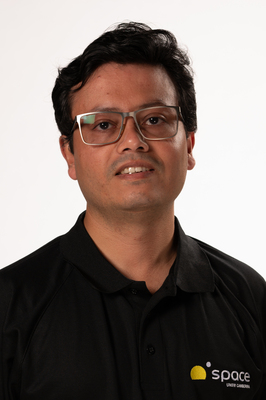
Mr Anirban , is a PhD student in UNSW Canberra Space domain.
Anirban’s research interests revolves around application of Foundation models, Multimodal learning coupled with Federated learning in remote sensing domain. Anirban is also looking at applying the learning, for onboard processing of information in LEO satellites.
Anirban has got 17+ years of experience working in Information Technology (IT) Industry across multiple geographies (UK, Europe and Australia). He is currently working as an IT Architect in a Federal Government Agency in Australia. Anirban has done is BTech in Electronics and Communications Engineering from West Bengal University of Technology, India. He has also done his Masters in Business Administration from the same University.
Matthew Anderson
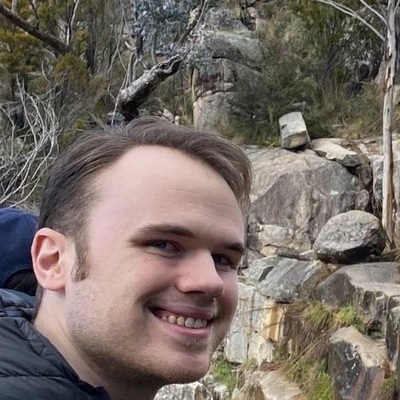
- Undergraduate at Monash University 2015-2017
- 1st Class Honours in Criminology at Monash University 2018
- Researcher at the University of Melbourne 2019
- PhD candidate at UNSW Canberra 2020-present
Research Interests
Matt’s primary area of research interest is in cybercrime and how the medium of the Internet can shape human behaviour. His Honours project in 2018 examined cyberstalking amongst university students and was followed in 2019 by research work on the experience of repeat victims of online romance scams. Matt’s PhD project explores the contributions of victims, offenders and online protection mechanisms to the online investment fraud victimisation process.
Publications
Exploring the roles played by trust and technology in the online investment fraud victimisation process
https://doi.org/10.1177/26338076241248176